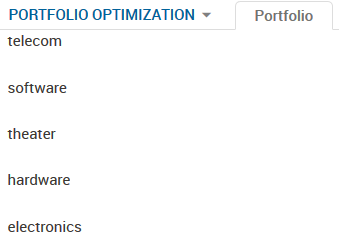Accessing Set Entities
Set entities are treated within VDL as one-dimensional arrays, each element being an object with a value and a label property.
You can access the elements of a set with the square bracket
[ ] notation. Set entities are simple arrays and it is very common to iterate over them. The following markup:
<vdl-section>
<vdl-column vdl-repeat="=item in scenario.entities.RISK">
<p vdl-text="=item.value"></p>
</vdl-column>
</vdl-section>
renders as:

Loops and the
<vdl-repeat> element are covered thoroughly in
Using Loops with Arrays and Sets.

Rendered View of a Set Entity
If you wish to extract individual elements from a set entity, you need to protect the statement with a guard, such as:
<p vdl-text="=scenario.entities.RISK.length &&
scenario.entities.RISK[0].value ?
scenario.entities.RISK[0].value :
'' "></p>
By default, there is no guarantee about the order in which members of a set entity will be returned. However, within a
<script> block, a
set sorter function can be assigned via the JavaScript API.
<script>
function setSorter(originalSet) {
// Sort the set, for example, in reverse
// integer order for a set of integers
return originalSet.sort(function(a,b) {
return a < b;
});
}
insight.addSetSorter('MySet',setSorter);
</script>

